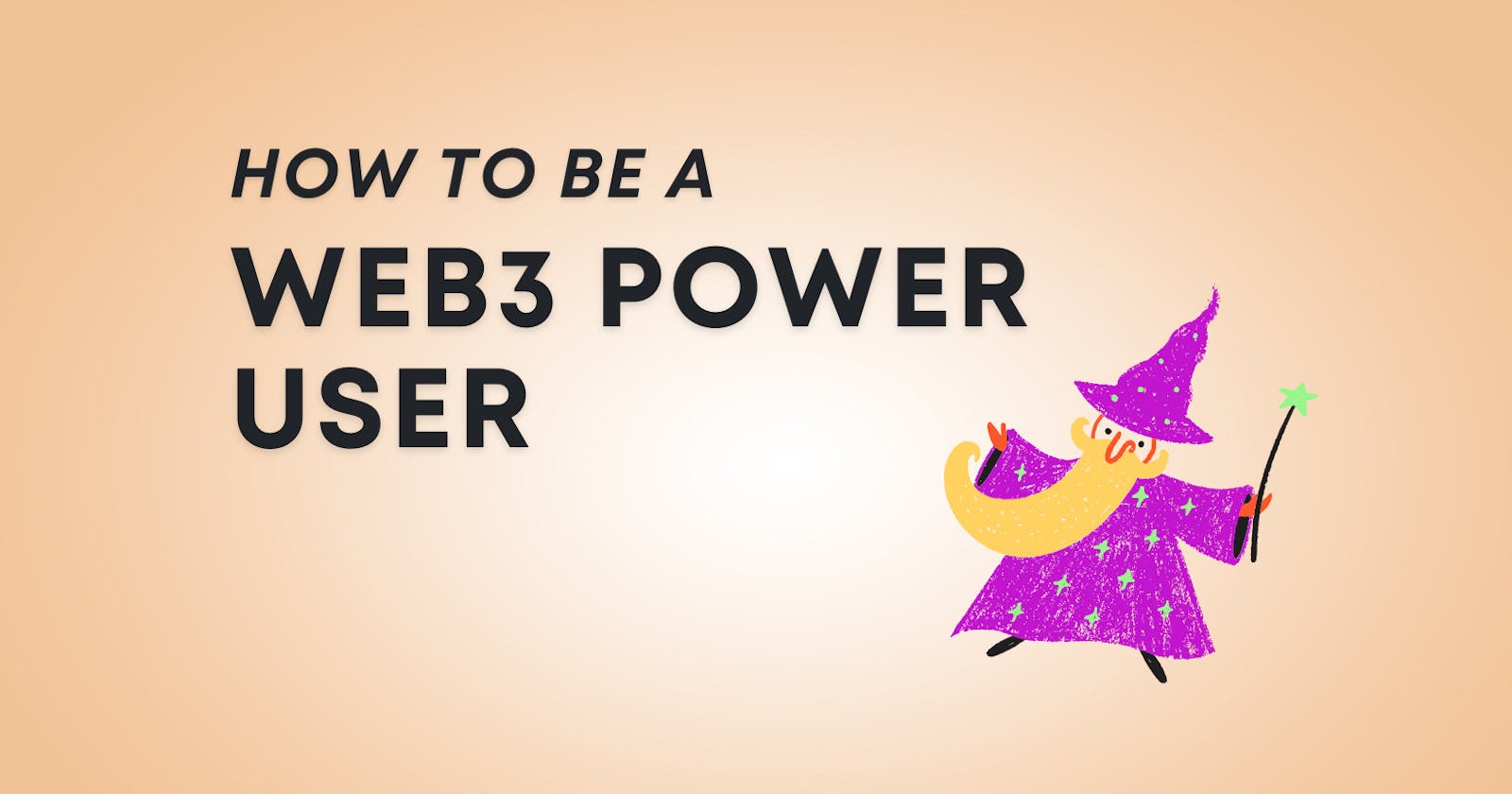This is a post for anyone interested in the crypto/web3 ecosystem. Crypto is more than stocks that you can buy and sell. If you want to learn more, you should start by getting hands-on & using the tools that are available today. 👩💻
After becoming a user in the crypto ecosystem, building tools and becoming a developer becomes much easier. The topics here are also part of the first chapter of the web3 developer curriculum we're making with Austin & Carlos: Becoming a crypto/web3 power user.
In this post, I want to cover eight tools and concepts to start in the ecosystem! This post will be especially helpful for me to send over to friends and family when someone asks what can I actually do in crypto?.
Short Tip: 🐇 Before going into the tools and protocols, I want to mention RabbitHole, a platform where you can learn and earn crypto using web3 applications. It helps you navigate through crypto apps and how to use them. So if you're interested in trying out what web3 apps are available today, I suggest you head over to the RabbitHole app.
Note: The tools we'll cover in this post are for the Ethereum blockchain. Most concepts are the same for the different ecosystems, but the tools differ, and you can look them up accordingly.
1. Crypto Wallets: Metamask, Rainbow
As a user, it all starts with a crypto wallet, which is what allows you to talk to the blockchain. It gives you the tools you need to interact with cryptocurrencies. A crypto wallet generates a private & public key. A crypto wallet's main functionality is storing the keys and signing transactions.
- A public key, as the name indicates, is public. If you give someone your public address, they can send you cryptocurrencies.
- A private key is like your password. You should keep it safe and NEVER share it with anyone. Anyone with your private key has full access to your wallet. It's hard to remember and store this number; that's where seed phrases come in. It's a phrase generated from the private key that's human-readable and easier to store.
There are Custodial Wallets vs Non-Custodial Wallets.
- Custodial Wallets : A third-party (generally an exchange such as Coinbase, Binance, or Robinhood) has your private keys and signs transactions on your behalf. You trust the third party to hold your keys and give them your information.
- Non-Custodial Wallets : The user owns the private keys; there is no third party in between. Therefore, the user is the only person with the private key and/or seed phrase; no one else should have this information.
On a custodial wallet, you have limited functionality. You can do what the platform allows you to do, mainly to buy and sell coins/tokens. However, when you want to play a crypto game, this is generally not possible.
🌟 One of the most popular non-custodial crypto wallets is Metamask, head over to the website to set up your wallet. Another popular wallet is Rainbow, that's a mobile wallet.
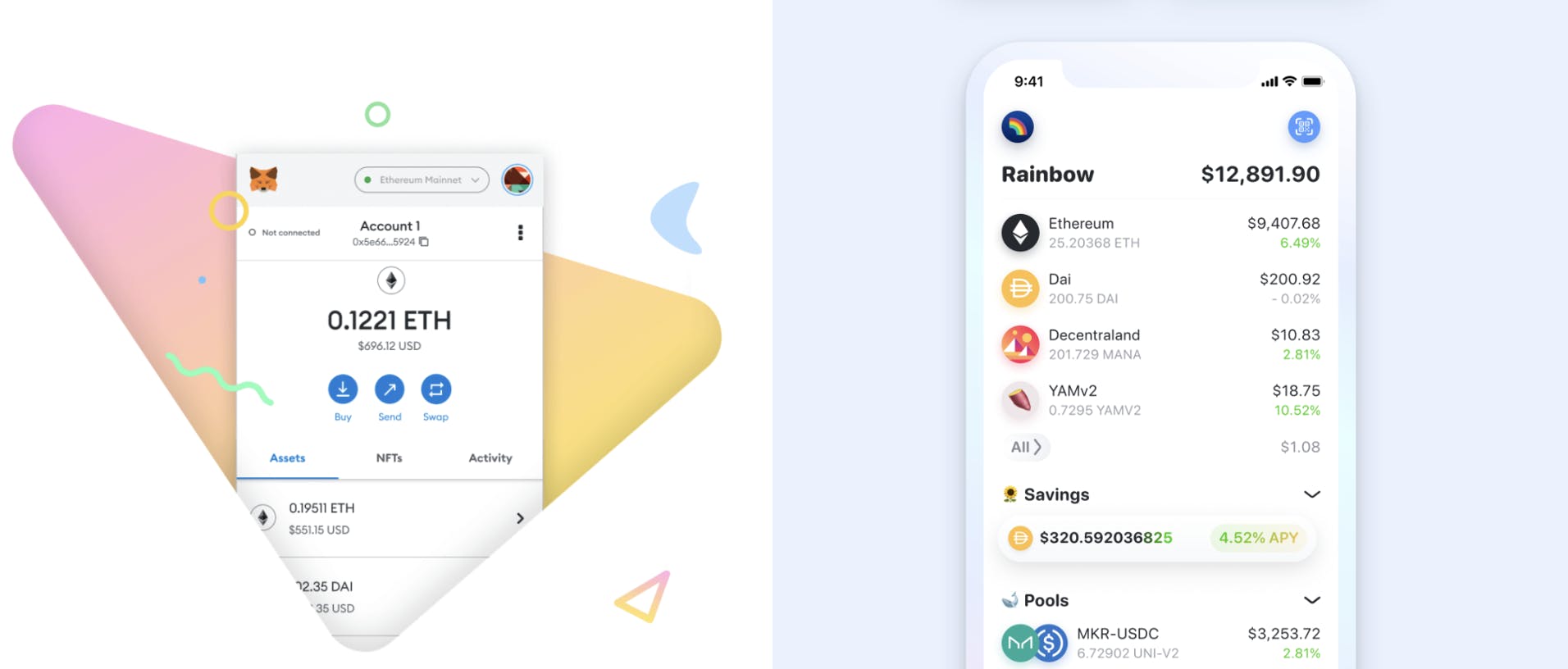
After you've set up Metamask, you can see your public address on the top. This is like your bank account number; it's a public account number you can share to receive funds.
You can now transfer your crypto from your exchange to your MetaMask wallet.
There will be a transaction fee associated with making the transfer. This is called a Gas Fee. Every transaction on the blockchain has a cost. So when you want to send tokens, you need to pay the price called the gas fee. Gas is the unit's measure to denote the transaction cost.
Etherscan is a block explorer for Ethereum, which records all the transactions and display them. You can check the gas fee paid, who started the transaction, what the block number is and many more details.
2. Naming for wallets: ENS
The wallet address is a 42-character hexadecimal address. Unfortunately, this is very hard to remember for humans.
That's where Ethereum Name Service (ENS) comes in. It's a lookup service built on Ethereum. It's like Domain Name Service(DNS) in the Ethereum world. A DNS takes the IP address and maps it to a human-readable domain name; ENS takes the crypto address and maps it to a human-readable string.
When you want to receive money into your account, you can send your ENS name instead of sending that complicated and long address. "edatweets.eth" for example, I can send someone this, and they can send me coins/tokens on Ethereum. This provides a basic form of identity.
🌟 Head over to get yourself an ENS from the app.

You can also then easily search for your ENS on Etherscan and see your transactions.

3. NFTs: OpenSea, Foundation, Zora
The first thing that most people do is get a Non-Fungible Token(NFT); it's also the first thing I did.
So let's unpack what an NFT is:
- Non-fungible: Goods that have unique properties can not be changed with one another. For example, bitcoin is a fungible asset. If we each have a bitcoin and send them to each other, we'll have the same thing in the end. On the other hand, a house is non-fungible. If we decide to switch homes, we'll end up with something different.
- Token: In short, a blockchain is a shared and immutable ledger, and a token is a digital asset living on top of the blockchain.
NFTs are unique digital assets on the blockchain. Any digital asset can be an NFT; the most popular types are Collectibles and Art. We also see Writing NFTs and Music NFTs.
- Art is self-explanatory. Artists have the chance to create their work on the blockchain and can directly reach their buyers.
- Collectibles, as the name indicates, are a collection of assets in the format of an NFT. Think of these as Pokemon cards or even penny collections.

The most popular NFT platform is OpenSea. Others are Foundation and Zora.
Since Ethereum is a public ledger, you can get the data on what's happening from third-party tools. Dune Analytics is a platform that does this. You can see the price actions, changes in volume for a project, and details of an NFT collection that has the data on the blockchain.
Here's how the OpenSea data look like:

🌟 You can head over to one of the platforms to grab an NFT, or just have a look!
4. Decentralized Exchange: Uniswap
There are many different tokens/coins on coinmarketcap. So when you want to trade coins/tokens, you can do this on your centralized exchange or a decentralized platform.
First, let's recap what a Centralized Exchange vs. Decentralized Exchange is:
- Centralized Exchange: An exchange that's owned by one entity. They allow you to buy and sell cryptocurrencies. Coinbase, Binance, and Robinhood are popular examples of Centralized Exchange platforms.
- Decentralized Exchange: An exchange that allows for peer-to-peer cryptocurrency transactions. There are no intermediaries. Instead, it's based on smart contracts. Uniswap is a Decentralized Exchange on the Ethereum Blockchain. It is one of the most popular platforms to trade cryptocurrencies.
It's also important to note the difference between coin and token.
- A coin exists on its own blockchain. It is a digital representation of money for that blockchain. BTC, ETH or SOL are cryptocurrency coins; they each have their own blockchain.
- A token functions on top of an existing blockchain via smart contracts. NFTs are a type of tokens. Basically, coins have their own blockchain and are used as a medium of exchange, whereas tokens live on top of a blockchain and can have different values or utilities.
🌟 You can head over to swap tokens from Uniswap. Here's what swapping tokens look like on Uniswap.
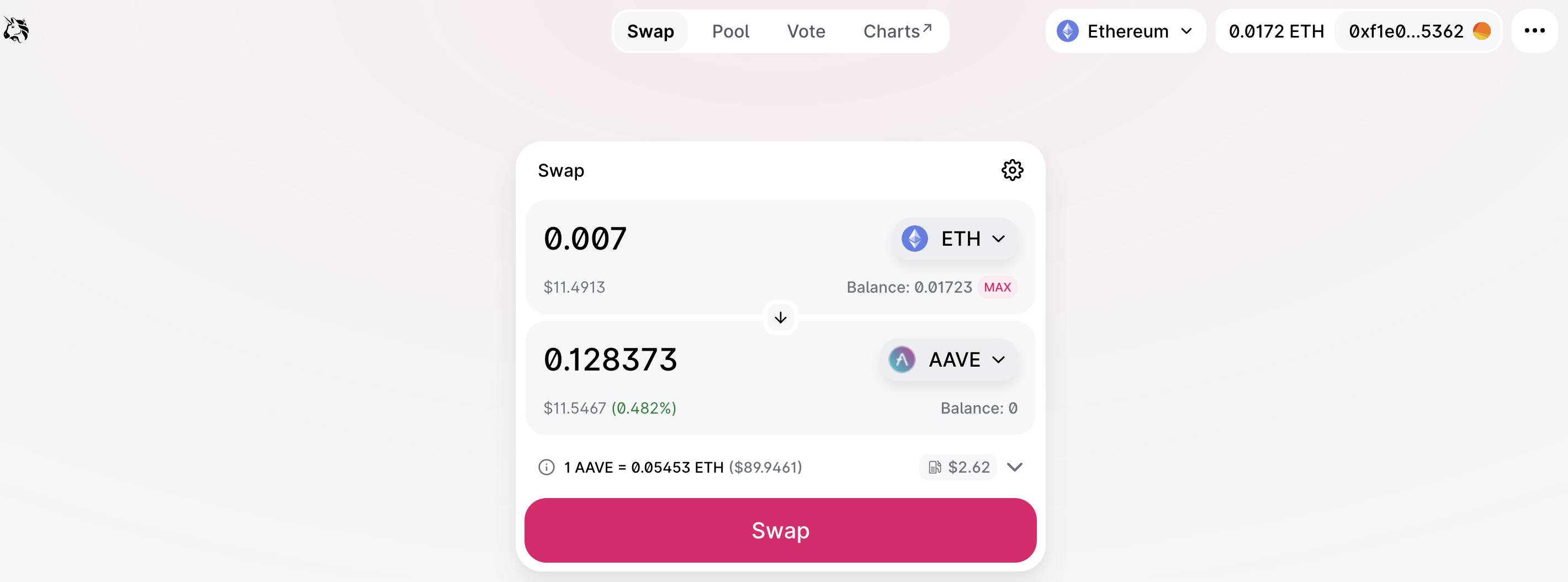
5. Decentralized Finance: Aave
After trading digital assets, then comes Decentralized Finance(DeFi). It's financial technology based on distributed ledgers. There aren't any central intermediaries. Instead, the transactions are peer-to-peer. So anyone can use these platforms without needing approval; basically everyone has access to the same platforms from anyone around the world.
Aave is a decentralized non-custodial liquidity protocol. It allows users to manage their digital assets. Users can participate by borrowing and depositing assets. Depositing assets means that you are providing assets to the liquidity pool, or in other words, you are supplying money to the smart contract.
🌟 You can head over to Aave to learn more.

6. Track your wallet: Zapper
With your wallet address, you can track all that you own. For example, let's say you have NFTs and others tokens in your wallet, staked some tokens on various platforms. Since it's all on the public blockchain, you can see all these in a central place.
Zapper.fi is a platform that allows you to do this. So, you can easily track your wallet(s).
You can also see what you own on Etherscan, but you will not be able to see the NFT images, and the UI is focused on showing transactions rather than the assets.
🌟 Head over to Zapper.fi to view your web3 portfolio.
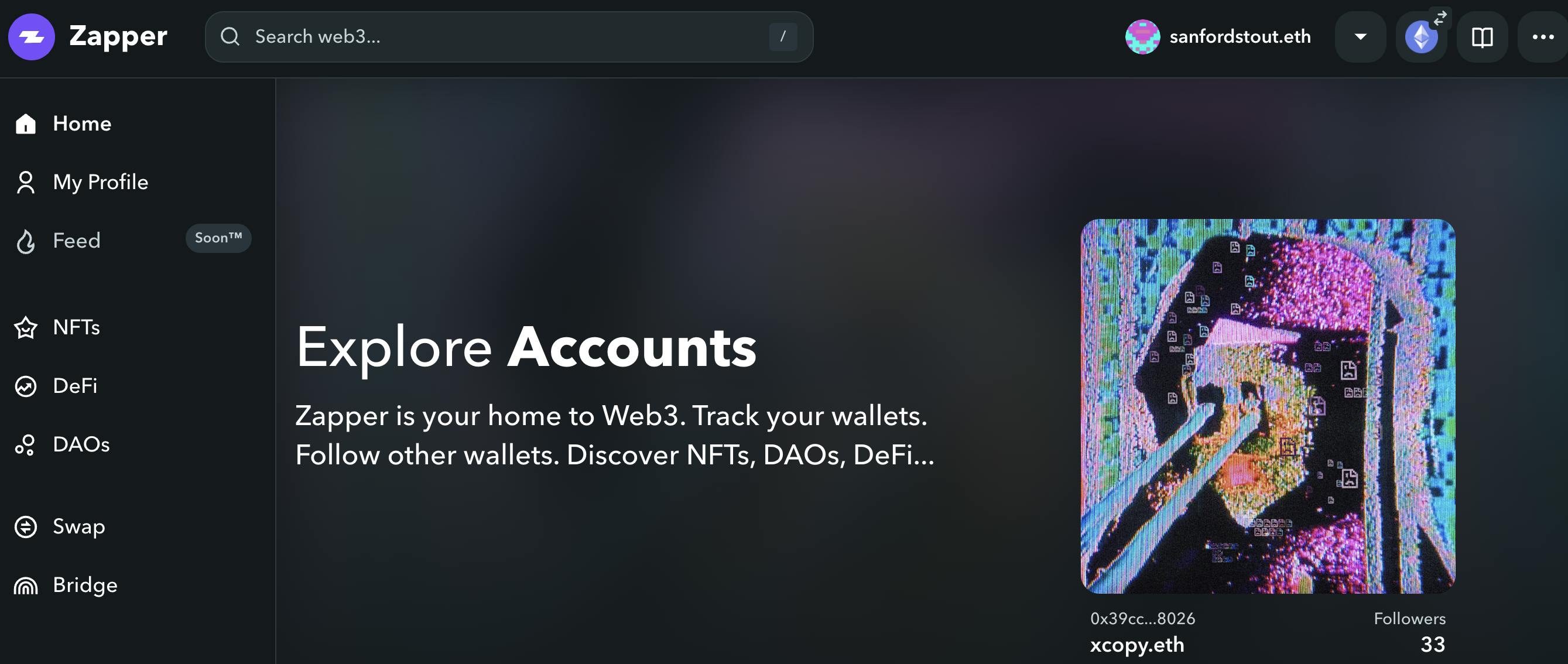
7. Multisig Wallet: Gnosis Safe
A Multisignature(multisig) is a smart contract wallet with two or more signers.
It requires two or more private keys to set up a crypto wallet. Once you set up a multisig, you can define the rules to sign and execute transactions. For example, you can have a wallet with five signers, and four signers need to approve for transactions to be executed.
Gnosis Safe is a multisig on Ethereum. You can manage all your digital assets on a multisig wallet.
Mutlisig's are generally used in Decentralized Autonomous Organizations(DAOs). A DAO is like a real-world community with shared goals that have tokens for governance and incentives. The multisig is the shared bank account of the organization, and the transactions can only get executed when a certain number of people approve the transactions.
Alongside being used as shared bank accounts for groups, it's also a great way to add extra security to your wallet.
🌟 You can set up a multisig on the Gnosis Safe app.
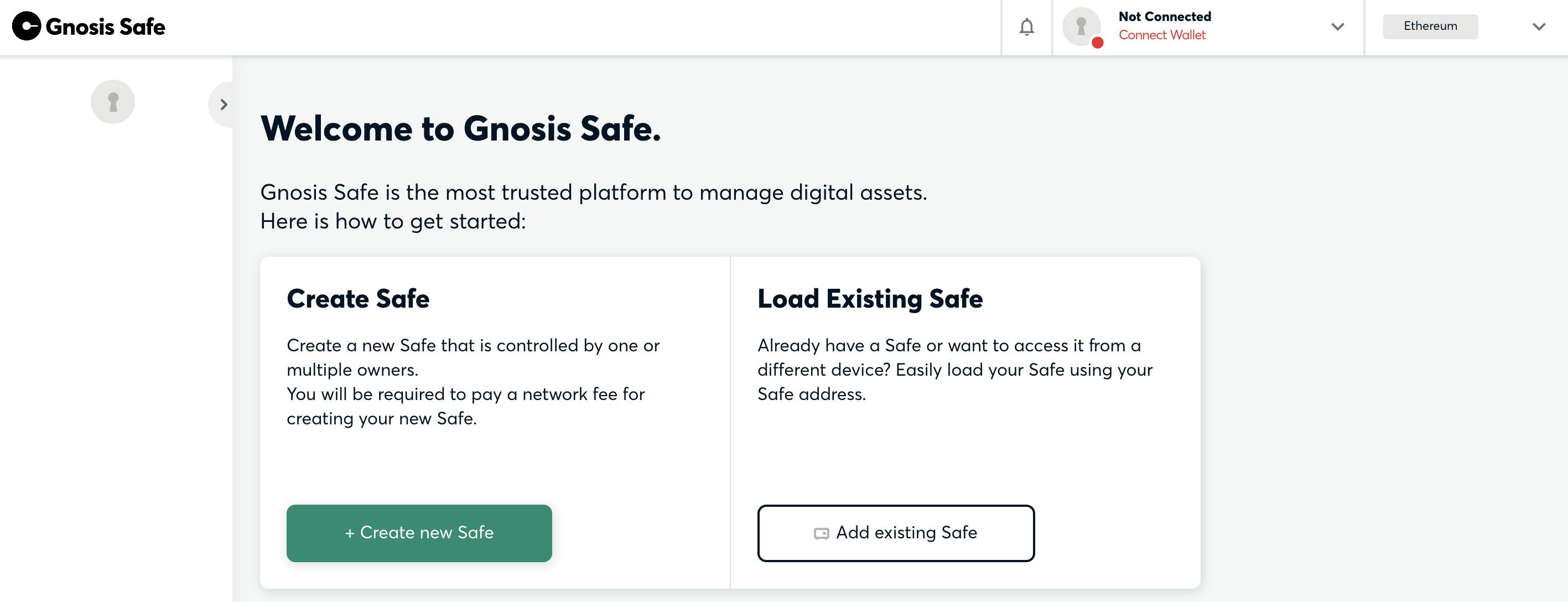
8. Scaling Solutions: Optimism, Polygon, zkSync
Scaling solutions aim to increase the speed and lower the cost without giving away the security and the security or decentralization of the main blockchain, also known as the L1 base chain.
There are various kinds of scaling solutions for Ethereum that are being used and researched. For example, layer 2 is a type of scaling solution that provides faster and cheaper transactions while using the security of Ethereum.
In this post, we will not be diving into the world of Scaling solutions, but here are some resources to follow up with:
- Scaling on Ethereum.org
- Layer 2 Scaling Solutions Explained (Rollups, Plasma, Sidechains, Channels Animated)
- Ethereum Layer 2 Scaling Explained (Rollups, Plasma, Channels, Sidechains)
This is an introduction, and there's a lot more that you can do; this was just the tip of the iceberg! I hope it was helpful to give an overview & that you're a crypto super power user!
If you have any questions or comments, drop them below or reach out to me on Twitter. See you at the next one! 👋
